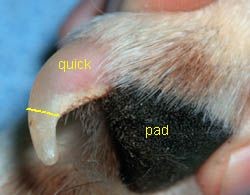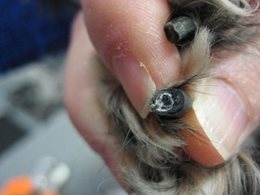The most common causes of owners not wanting to cut their own dog’s nails are because many are afraid of “quicking” their pet, or their pet is scared by the clippers. Nail trimming can become quite a hassle at home when trying it for the first few times, but don’t give up! Here are some helpful tips and tricks to help cut through the angst and drama when trying to start trimming your dog’s nails.
Why Are My Dog’s Nails so Long?
For a lot of us, we live in a busy city where our dogs are lucky to get a mile or two of a walk a day, which alone is not enough to help wear down a nail to the point where it does not need to be trimmed. The amount of activity and where your dog walks play a significant part in how quick and long their nails grow, a highly active dog will have more of a chance to shorten their nails through activity and a dog that walks on concrete more often than grass will grind their nails down.
Types of Clippers
Choosing the right pair of clippers might be overwhelming at first due to the number of different brands and styles out there, but selecting the right size for your dog as well as making sure the clippers are sharp can help. Blunt or dull clippers can cause the nail to split. If you are more concerned about your dog’s nails being sharp but not long, like when they are puppies, you can use a pumice stone to grind them down into a rounded shape gently.
Getting Started
At first, you might be tempted to jump the gun and start cutting nails right away, or you might be very nervous, starting slowly and calmly can help ease both you and your dog into the routine of nail trimming and reduce stress for all involved. Try having your dog smell the clippers and taking treats or toys from beside or on top of the clippers to get them used to it and to associate them with something positive.
Cutting the Nails
Always remember less is more. When you are ready to begin trimming the nails, start by taking the tips off and reward with each nail you get done. You don’t have to try and be a star and get every single nail the first time; you can start with a few or even one if your dog starts to get nervous and come back again in a couple of days and repeat the process.
Taking small bits at a time, especially on longer nails, is always the best way to go so you can start to see the quick before you nick them. Longer nails usually have longer quicks, but, by trimming the nails weekly/bi-weekly, it can help recede the quick as the nail becomes shorter.
What Is the Quick and How Do I Spot It?
The quick in your dog’s nail is the blood supply to the nail. Spotting the quick on dogs with clear nails is a bit easier as you can see where the pink part starts. With black nails, you can cut small pieces of the nail at a time until you can see the pulp. The pulp is identified by usually being dark and circular in appearance once you reach the pulp you know you are close to the quick and can stop on that nail.
If you do happen to cut your dog’s quick they may yelp in surprise, it is not very painful, but it can cause heavy bleeding. You can apply styptic powder or cornstarch to the affected area to stop the bleeding.


Attempting to trim your dog’s nails can certainly feel like a daunting task but by doing the proper research and positively introducing nail trimming into you and your dog’s routine you can become confident and able to do it.
Written by Madison Smith, Animal Care Assistant